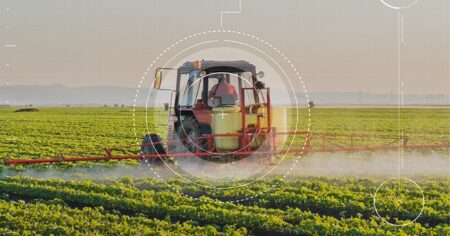In many cases, the highest-yielding crops are coddled by a team of experts. Perfectly chosen seed, near-constant scouting, and spoon-fed nutrition are cornerstones of record-breaking production.
While applying the perfect nutrients at the perfect time may lead to high yields, that’s not economically viable for most production systems. The average farmer knows each pass across the field costs extra time and money when there’s often none to spare.
That’s not to say there are no lessons to be learned from highly managed acres. A scaled-back approach to maximizing fertilizer timing can offer production gains.
Know the Baseline and Target
A solid grasp on the field’s starting point and goals is key to creating an effective fertility schedule. A complete soil test, measuring organic matter, pH, macronutrients, and micronutrients, shows which issues should take priority. A general idea of soil texture and field land-scape can guide best practices.
Once a baseline is set, yield goals for specific crops can determine anticipated nutrient requirements and guide inputs.
“We recommend a build-and-maintain approach,” said Matthew Ruark, a professor and Extension soil scientist at the University of Wisconsin-Madison. “If you can maintain your soil phosphorus and potassium levels, and work to only apply what you remove, that tends to be a fairly efficient approach for profitability and production.”
Tailor Timings
Application windows for nutrients with less soil mobility are more flexible than those of nutrients prone to leeching. Applications made before planting are opportunities to focus on immobile nutrients.
“Zinc, phosphorus, and potassium are some of the key nutrients to apply before planting,” said Tryston Beyrer, a crop nutrition lead for the Mosaic Company.
Highly mobile nutrients, such as nitrogen and sulfur, may benefit from split applications or using fertilizers that contain fast- and slow release characteristics. Sandy soils and wetter fields tend to have higher leeching rates.
“In general, it’s a case-by-case basis,” Ruark said. “If you put your nitrogen out before planting, it can work well, but you’re exposing yourself to more risk.”
Knowledge of typical weather patterns paired with on-farm testing can guide your nutrient application schedules.
“There’s not necessarily an easy answer,” Ruark said. “In some years, a split application will pay off, and some years, it may cost you a bit extra. You just have to decide where you want to mitigate risk.”
Have a Plan B
Spring weather conditions rarely cooperate with planned operation schedules. When wet conditions limit the ability to get into the field, use your soil baseline to prioritize.
If initial soil tests show low nutrient availability, a top-dress application, as soon as field conditions allow, may be needed. In other cases, several in-season applications of more mobile nutrients may make sense.
“This is an excellent example of why to build up your fertility levels,” Beyrer said. “If you happen to have a spring where conditions did allow you to get phosphorus and potassium out, your yield is not going to be as severely impacted because you had a good base of fertility.”


:max_bytes(150000):strip_icc()/6895915516_c5d91051e4_o-dcfd56ad94744fe7a21a73a4193bf43a.jpg)
:max_bytes(150000):strip_icc()/BloombergContributor-2213407471-950399016ccb4e73ab5886ad1d623b2e.jpg)



:max_bytes(150000):strip_icc()/fotokostic-1147995998-677532c018e7476f86089fab238019fd.jpg)

:max_bytes(150000):strip_icc()/For-Sale-Farmland-Natalina-Sents-Bausch-d53037fe10b24b288740b5a3089aa5c7.jpg)
:max_bytes(150000):strip_icc()/adm-1-ee7f0c8ca6d74828a32b170d601c90c5.jpg)
